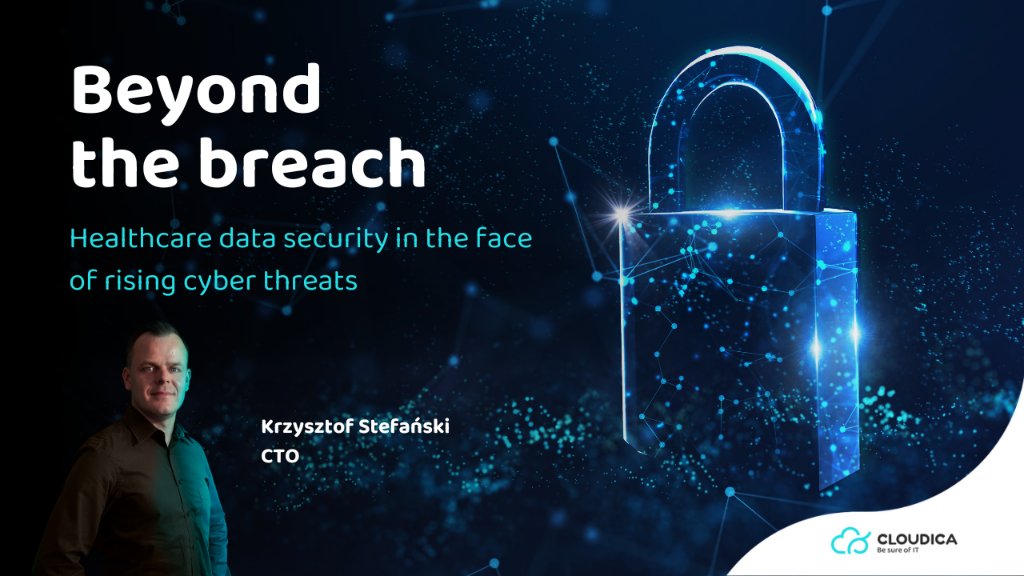A recent data security incident in one of the Polish medical laboratories was widely discussed among the media. The cyber attack on Alab Laboratories reminds us of the ever-growing threat cybercrime poses.
Following that incident, I’d like to share my reflections and experiences on this ever-growing threat posed by cybercrime. Also, I would like to emphasize key aspects of security, procedures, and processes, as well as highlight security measures at the network, IT infrastructure, and procedural levels that are worth implementing to minimize the risk of data loss and protect the privacy of system users.
Even the most advanced security systems may not always prevent an attack. Therefore, it is crucial to have monitoring and incident detection systems that can react immediately to abnormalities. Automated network traffic analysis systems and event log monitoring are essential for recognizing suspicious activity.
Regular Security Audits should become a standard practice in every healthcare organization. Regularly checking system security, identifying weaknesses, and eliminating potential vulnerabilities are key elements in maintaining a high level of security.
Humans are often the weakest link in the security chain. Therefore, regular staff training to increase cybersecurity awareness is extremely important. Recognizing threats from phishing emails or dangerous attachments is a crucial skill for every employee.
Advanced Data Encryption is not only a standard but a duty in the medical sector. Implementing advanced data encryption during storage, transmission, and processing can significantly reduce the risk of unauthorized access.
Keeping track and control all areas of network and IT infrastructure security:
- Firewalls and Content Filters: Configure advanced firewalls and content filters to control network traffic and block potentially dangerous sites.
- Multi-level Antivirus Protection: Implementing multi-level antivirus protection helps identify and neutralize malicious software at various stages of an attack.
- Internal Traffic Monitoring: Tracking internal network traffic allows for quick identification of abnormalities and unauthorized access.
- Workstation Security: End devices are a crucial part of the infrastructure requiring protection, maintaining system and software updates, access control, and data encryption. The lack of standard workstation security makes it easier for threats to spread within the organization.
In case of an attack, it is crucial to quickly and effectively restore services. Having an emergency plan and regular data backup systems are key tools for a quick return to normalcy after an incident.
Active collaboration with security institutions such as CERT Polska or the police Cybercrime Combat Bureau can significantly increase the chances of quickly identifying perpetrators and restoring normoperationsion.
It is also important to remember that investments in data security are not just a legal obligation but, above all, an investment in patient trust and the company’s reputation. I hope that the above guidelines will inspire further actions aimed at strengthening our security systems.
Collaboration with a reputable IT security partner, such as Cloudica is also worth considering. An external partner can provide specialized knowledge and experience, supporting the implementation and maintenance of advanced security measures.
Securing sensitive data in the healthcare sector requires a comprehensive and proactive approach. By implementing strong security measures, conducting regular audits, educating staff, and fostering collaboration with external security experts, businesses from the industry can mitigate the risks associated with cyber threats. The investment in data security ensures compliance with legal obligations and contributes to building trust among patients and maintaining the organisation’s reputation. Consideration of these measures and collaboration with trusted partners will play a crucial role in building a strong security posture and adapting to the constantly changing landscape of cyber threats.




